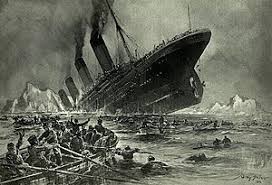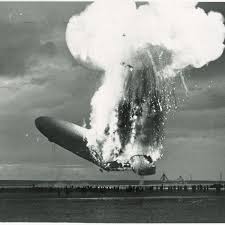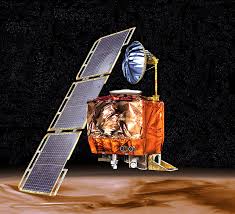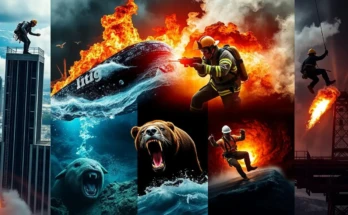Introduction
History is often celebrated for its triumphs and remarkable achievements, but it’s equally important to learn from its epic failures. These monumental missteps, though disastrous at the time, offer invaluable lessons in humility, resilience, and innovation. This article delves into some of the most epic failures in history, exploring their causes, impacts, and the insights they provide.
The Sinking of the Titanic

The Unsinkable Ship
The Titanic was touted as the pinnacle of maritime engineering, an “unsinkable” ship that promised luxury and safety. However, on April 15, 1912, the Titanic struck an iceberg and sank, resulting in the deaths of more than 1,500 passengers and crew.
What Went Wrong?
Several factors contributed to the disaster, including inadequate lifeboats, overconfidence in the ship’s design, and poor decision-making. The Titanic’s tragic end underscored the dangers of hubris and the importance of stringent safety measures.
Also Read Keeping the Flame Alive: Date Night Ideas for Every Stage of Your Relationship
The Hindenburg Disaster

The Ill-Fated Airship
The Hindenburg, a German airship, was the largest aircraft ever built at the time of its maiden flight in 1936. On May 6, 1937, the airship caught fire while attempting to land in New Jersey, killing 36 people.
The Cause of the Fire
The exact cause of the Hindenburg disaster remains debated, but the use of highly flammable hydrogen instead of helium is widely believed to have been a critical factor. The disaster marked the end of the airship era and highlighted the importance of safer materials and technologies.
The Challenger Explosion
A Tragic Day for NASA
On January 28, 1986, the space shuttle Challenger exploded just 73 seconds after liftoff, killing all seven astronauts on board. The disaster was broadcast live, shocking the world and bringing NASA’s space program to a halt.
The Root Cause
Investigations revealed that the explosion was caused by the failure of an O-ring seal in one of the solid rocket boosters. The disaster underscored the importance of rigorous testing, quality control, and transparent communication in complex engineering projects.
The Ford Edsel
The Flop of the Century
In 1957, Ford introduced the Edsel, a new car model that was supposed to revolutionize the automotive industry. However, the Edsel was a colossal failure, with poor sales leading to its discontinuation in 1960.
Reasons for Failure
The Edsel’s failure was due to a combination of factors, including poor market research, unattractive design, and quality control issues. The car became synonymous with commercial failure, serving as a cautionary tale for businesses about the importance of understanding consumer preferences.
The New Coke Debacle
A Recipe for Disaster
In 1985, Coca-Cola decided to change its 99-year-old formula and introduced New Coke. The response was overwhelmingly negative, with loyal customers demanding the return of the original formula.
Back to Basics
Coca-Cola quickly reverted to the original formula, rebranded as Coca-Cola Classic. The New Coke debacle highlighted the importance of brand loyalty and consumer sentiment in product decisions.
The DeLorean DMC-12
The Futuristic Flop
The DeLorean DMC-12, known for its gull-wing doors and stainless steel body, gained fame as the car from “Back to the Future.” However, the car was a commercial failure, and the company went bankrupt in 1982.
What Went Wrong?
The DeLorean faced numerous issues, including production delays, high costs, and quality problems. Its failure illustrated the challenges of bringing an innovative product to market without adequate resources and support.
The Millennium Dome
A Costly Misadventure
The Millennium Dome in London was built to celebrate the turn of the millennium, but it faced widespread criticism for its high cost and lack of clear purpose. Despite attracting visitors, it failed to meet financial expectations.
Lessons Learned
The Millennium Dome debacle underscored the importance of clear planning, effective management, and realistic budgeting in large-scale projects. It has since been repurposed as The O2, a successful entertainment venue.
The Maginot Line
The Defensive Blunder
The Maginot Line was a massive fortification built by France in the 1930s to deter a German invasion. However, during World War II, German forces bypassed the line by invading through Belgium, rendering the fortifications useless.
Strategic Miscalculations
The failure of the Maginot Line highlighted the dangers of inflexible military strategies and the need for adaptability in defense planning. It also demonstrated the importance of understanding and anticipating enemy tactics.
The Fire Phone
Amazon’s Misstep
In 2014, Amazon launched the Fire Phone, hoping to compete with established smartphone brands. However, the device was a commercial failure, and Amazon discontinued it the following year.
Reasons for Failure
The Fire Phone struggled due to its high price, lack of unique features, and limited app ecosystem. The failure underscored the challenges of entering a competitive market without a compelling value proposition.
The Betamax vs. VHS
The Format War
In the late 1970s and early 1980s, Sony’s Betamax and JVC’s VHS competed to become the dominant home video format. Despite Betamax’s superior quality, VHS eventually won the format war.
Market Dynamics
Betamax’s failure was due to several factors, including higher costs, shorter recording times, and limited content availability. The format war highlighted the importance of market dynamics and consumer convenience in technology adoption.
The Segway Hype
The Overhyped Invention
The Segway, introduced in 2001, was touted as a revolutionary transportation device that would change urban mobility. However, it never gained widespread adoption and became more of a novelty item.
Lessons Learned
The Segway’s failure was due to high costs, regulatory challenges, and limited practical use. It served as a reminder that even innovative products need to address real consumer needs to succeed.
The AOL-Time Warner Merger
A Failed Partnership
In 2000, AOL and Time Warner announced a $165 billion merger, hoping to create a media and internet giant. However, the merger quickly turned sour, resulting in massive losses and the eventual separation of the companies.
What Went Wrong?
The failure of the AOL-Time Warner merger was due to cultural clashes, overvaluation, and the bursting of the dot-com bubble. The debacle highlighted the complexities and risks of large-scale corporate mergers.
The Darien Scheme
The Ambitious Colony
In the late 1690s, Scotland attempted to establish a colony in Panama called the Darien Scheme. The venture aimed to create a profitable trading hub but ended in disaster due to disease, poor planning, and lack of support.
National Impact
The failure of the Darien Scheme led to significant financial losses for Scotland and was a factor in the country’s eventual union with England in 1707. It underscored the importance of thorough preparation and realistic expectations in colonial ventures.
The Mars Climate Orbiter

A Costly Mistake
In 1999, NASA’s Mars Climate Orbiter disintegrated upon entering Mars’ atmosphere due to a navigation error. The mishap was caused by a failure to convert units from imperial to metric.
The Importance of Attention to Detail
The loss of the Mars Climate Orbiter highlighted the critical importance of attention to detail and rigorous testing in space missions. It also underscored the need for standardized measurement systems in scientific endeavors.
The Bay of Pigs Invasion
A Botched Operation
In 1961, the United States launched the Bay of Pigs Invasion, an attempt to overthrow Cuban leader Fidel Castro. The mission failed disastrously, with the invading force quickly defeated and captured.
Strategic Blunders
The failure of the Bay of Pigs Invasion was due to poor planning, inadequate intelligence, and a lack of support for the insurgents. The event was a major embarrassment for the U.S. government and underscored the risks of covert military operations.
The Chernobyl Disaster
The Nuclear Catastrophe
On April 26, 1986, a reactor at the Chernobyl Nuclear Power Plant in Ukraine exploded, releasing massive amounts of radioactive material into the environment. The disaster is considered one of the worst nuclear accidents in history.
What Went Wrong?
The Chernobyl disaster was caused by a combination of design flaws, operator errors, and inadequate safety protocols. The catastrophe highlighted the critical need for stringent safety measures and transparency in the nuclear industry.
Conclusion
Epic failures, though often catastrophic, provide valuable lessons that shape our future decisions and innovations. From the sinking of the Titanic to the Chernobyl disaster, these monumental missteps remind us of the importance of humility, preparation, and adaptability. By learning from history’s greatest failures, we can strive to avoid similar mistakes and build a more resilient and informed society.
FAQs
1. Why did the Titanic sink despite being considered “unsinkable”?
The Titanic sank due to a combination of factors, including inadequate lifeboats, overconfidence in its design, and poor decision-making.
2. What caused the Challenger explosion?
The Challenger explosion was caused by the failure of an O-ring seal in one of the solid rocket boosters, leading to the destruction of the space shuttle.
3. Why was the Ford Edsel a commercial failure?
The Ford Edsel failed due to poor market research, unattractive design, and quality control issues, making it a symbol of commercial failure.
4. What went wrong with the Mars Climate Orbiter?
The Mars Climate Orbiter disintegrated upon entering Mars’ atmosphere due to a navigation error caused by a failure to convert units from imperial to metric


